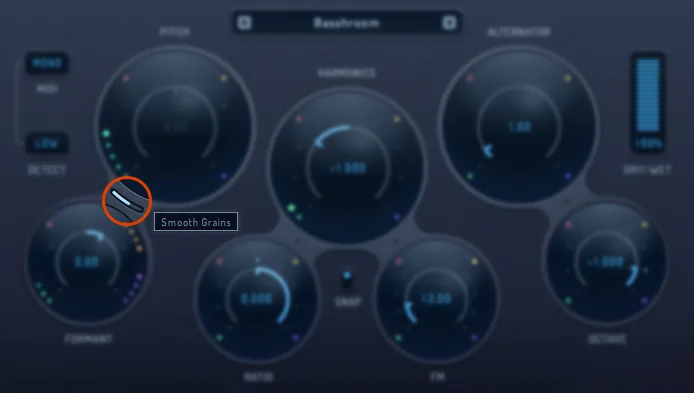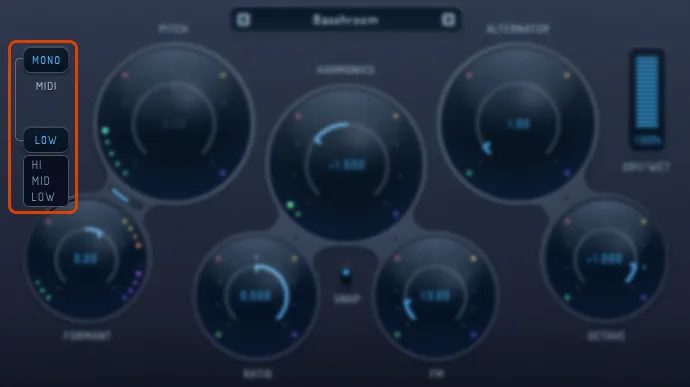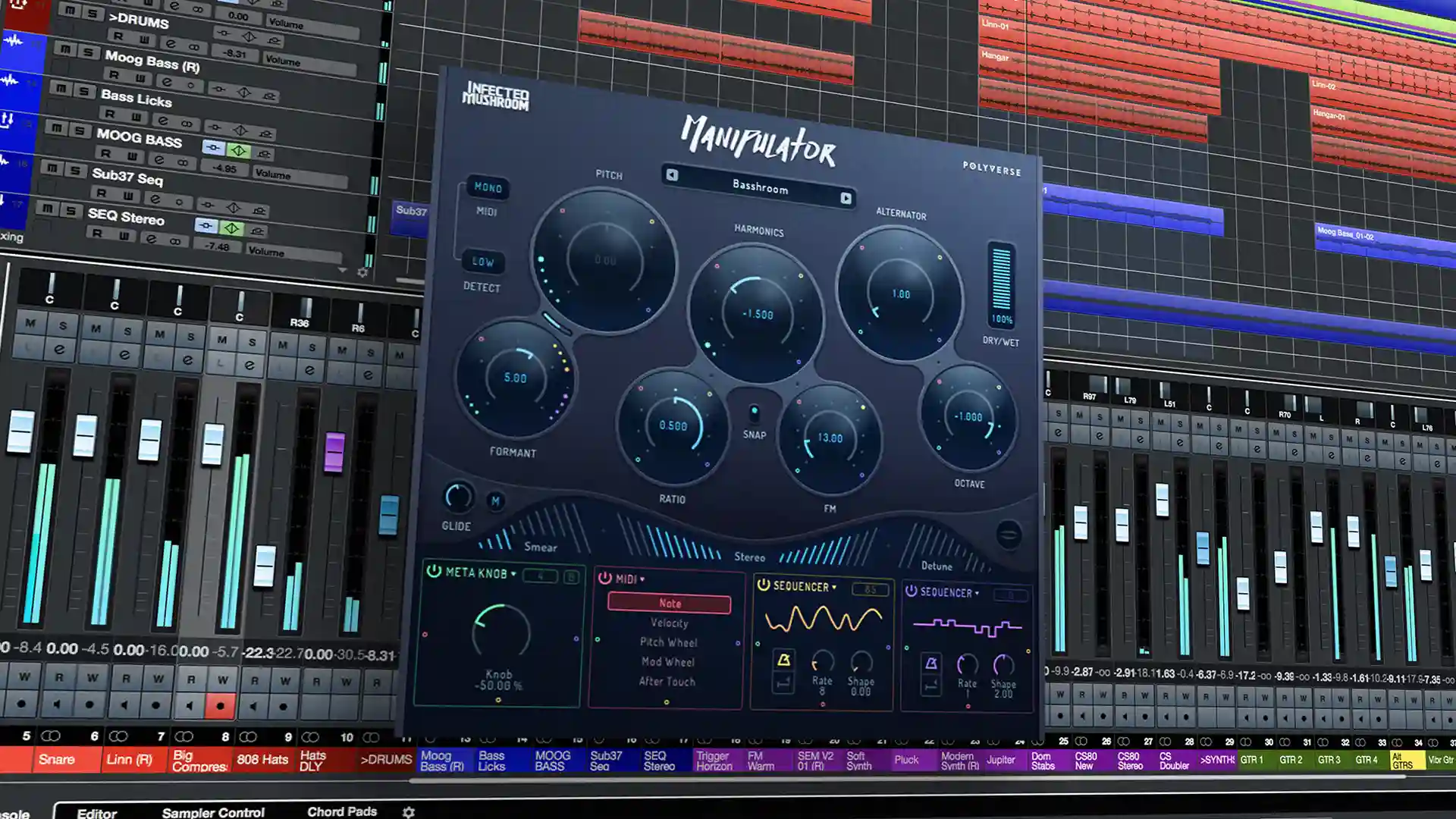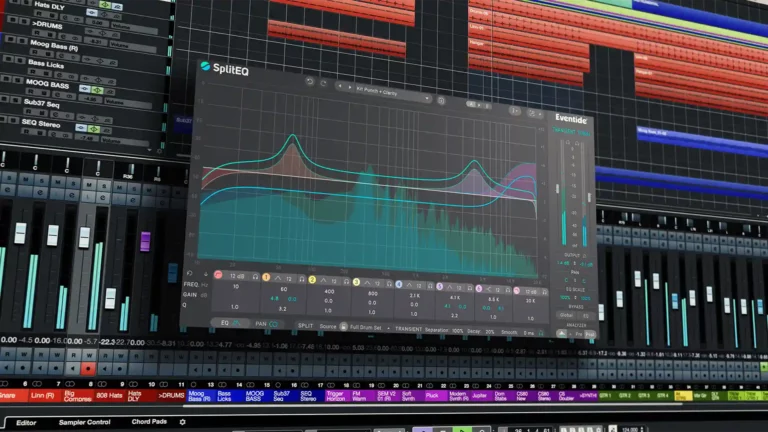Polyverse Manipulator is a powerful plug-in designed primarily for vocals but is also suitable for monophonic and rhythmic sounds in general.
It is a MIDI-controlled audio insert effect that processes only audio files. It can also process MIDI input live from a keyboard or MIDI track.
It was developed by Polyverse Music in collaboration with electronica duo Infected Mushroom.
Polyverse Manipulator Interface
It has an intuitive interface that has a sci-fi aesthetic. At the top of the GUI, there is a preset menu. The plugin came with numerous presets. They are organized helpfully and provide many excellent starting points. Some are immediately useful, but most were designed to demonstrate the plugin’s capabilities.

Three voice manipulation algorithms in Polyverse Manipulator
There are three voice manipulation algorithms in Polyverse Manipulator:

Pitch Shifter: It’s a pretty self-explanatory knob that changes the pitch of the incoming signal.
To change the pitch, it uses a granular-based algorithm, and there’s a slider to adjust the smoothness. A smoother grain makes the voice sound natural while a less smooth grain gives it that cool, gravelly robot voice.

Each degree on the scale corresponds to one semitone on the pitch shifter. The musicality of the sound surprised me. Whenever I hear pitched-up or pitched-down vocals, I dread the chipmunk or robot sound.
In fact, I was impressed by the clarity and tone of an octave shift. Pitch shifters modify the fundamental frequency of audio input without changing the formant.
In addition to pitch shifting, the formant control controls can be used to achieve a variety of effects simply by experimenting with the values. Due to the granular nature of the pitch shifter, massively lowering the pitch will result in gaps between the grains.
With the pitch setting, the plug-in can be told whether to expect low, mid, or high vocals.

In addition, it offers MIDI modes that include :
- Off: MIDI has no effect
- Mono: only one note at a time
- Poly: (up to four voices) for creating live harmonies
Harmonic Shifter: In harmonic shifting, the pitch does not necessarily change, but the timbre changes.
Having a basic understanding of how harmonics work is helpful when working with this. To see what sounds you get, you can just play it by ear. From practical to extreme results, this one has a wide variety of results.
With this control and the attached Ratio wheel, you can change the level of the harmonics from one to another, with the Ratio value determining how many levels are moved. By setting the value to 1, the first harmonic is shifted to the second harmonic, the second harmonic to the third harmonic, and so on.
In addition to the harmonic shifter, there is a frequency modulation control. The three controls can be used in conjunction to produce a very diverse timbre. My best results, however, came from subtler applications. A too drastic change resulted in varying degrees of robot voice.
Grain Alternator: As its name implies, this control alternates between grains in pitch. Alternator controls change the pitch interval between grains and are connected to further octave controls. I really like this effect, especially if you modulate the alternator wheel to create a crazy saw-like sound. It instantly stood out to me as a method for making simple risers and transition materials.
Other controls
In addition to the three main controls, the Smear, Stereo, and Detune effects can also be very useful.

There’s lots of color and character in these effects, so you’ll find lots of ways to incorporate them into your music.
Smear: Using granular processing again, Smear warms the sound by looping and crossing grains. The sound of this is a bit like that of a drunk robot at low levels. Higher levels lose the original context. This is great for creating new, evolving ambient sounds.
Stereo: This stereo widener is mono-compatible and widens the stereo accordingly. This is what it does, and it does it well.
Detune: Using granular-based detune/chorus effects.
Modulation Section in Polyverse Manipulator

At the bottom of the plugin, four additional slots are available for further processing and adding PS touches. In each of the four slots, you can add five modulation sources from Meta Knob, MIDI, Sequencer, Follower, or ADSR.
In Manipulator, these work similarly to assignable macro controls on softsynths.
They can be assigned as:
- Meta-knob. increasing and decreasing values
- Follower. Changes the amplitude according to the envelope
- ADSR. Classic ADSR envelope
- Sequencer. A combination of LFO patterns
- MIDI. Allows modulation from external MIDI messages, such as velocity and mod wheels.
The configuration of each of these can be customized in a variety of ways.
System Requirements:
Windows
- Windows 7 or newer
- VST / VST3 / AAX compatible (64-bit only)
macOS
- Mac OS X 10.9 or newer
- VST / VST3 /AU / AAX compatible (64-bit only)
Price:149$
InMusician Score
Summary
It is an excellent, powerful, and versatile tool for manipulating vocals (and other sources). The possibilities are endless, and you could easily spend a few hours playing with it just for fun! The MIDI pitch control and harmonization functions are also very useful.
Frequently Asked Questions about Polyverse Manipulator
It is a VST pitch shifter plugin that excels at transforming vocals. It is easy to create vocal harmonies or change the vocals so much that they sound more like a lead synthesizer than a human voice. Achieving both results is really easy with Manipulator.
Make the sounds you hear new and interesting by bending and shaping them.
Change the timbre and pitch of vocals and instruments.
There are ten different effects with endless possibilities.
Melodies of existing performances can be changed.
Up to 4 polyphonic voices can be used to create instant harmonies.
The ability to modulate in a wide range of ways.
Processing for live performances in real-time and with zero latency.
Monophonic audio can be dramatically changed in timbre and pitch with Polyverse Manipulator.
By acting as a MIDI-controlled audio insert, it can be used as a regular insert, processing an audio file or signal, but it can also receive MIDI input at the same time, altering the process in real time.
Due to its complexity, it can be quite overwhelming for inexperienced producers and musicians.
Conclusion
Manipulator makes it easy to get great sounds. While the pitching, formant, and harmonics sound smooth and lack the digital distortion that can occur when transposing audio, it’s the sheer simple fun of using it that has captured me.




